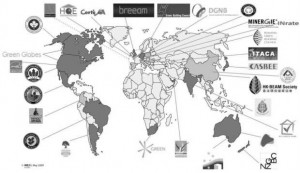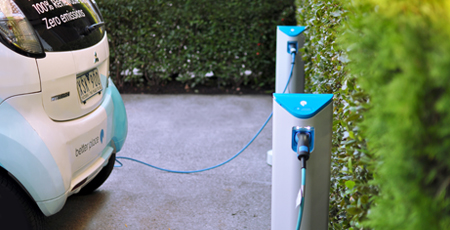If you are building a home, renovating your current residence or adding on to your house, it is important to find green products. With creativity and a little patience, you can ensure that your home or addition is built from sustainable products.
Sustainable Timber
Since wood is one of the most common products that builders need, it is important to find wood that is environmentally friendly. Finding wood that is not from old growth forests or rain forests is important. Every tree cut down in these forests is hastening climate change. To avoid this, look for one of three alternatives: sustainable growth wood, bamboo, or re-claimed wood.
Sustainable growth refers to those species that grow fast enough to regenerate. To be sure that the wood is grown in an eco-friendly manner, look for the Forest Stewardship Council logo. The Council covers 80 countries and approves members on, at least, three major criteria. First, the wood can grow back as fast as trees are thinned. Second, loggers do not clear-cut the land. Third, the logged area is not already under the threat of environmental depletion.
Bamboo, which is a grass, grows back four times faster than even the fastest trees; therefore, materials can be replenished fairly quickly. You can check with the International Network for Bamboo and Rattan to find out which bamboo is approved as part of a sustainable growth system.
Re-used timber may also be a possibility. Plus, it can offer a unique or classic look. The Buildings Materials Reuse Association offers ideas on finding and using reclaimed materials. In addition to finding suppliers, thinking creatively is often needed to make this method work. Make a home more interesting through reclaimed banisters, mantels or trim. Save money by utilizing reclaimed wood flooring, windows or cabinetry. Imperfect lumber salvaged from an old building or barn might be used to build a new deck or fence.
Certification Programmes
One sure way to find sustainable products is to look for certifications like the Leadership in Energy and Environmental Design (LEED) certification. LEED is a US based independent process that utilizes third party verification. LEED status is only granted to those products that can prove high performance with regard to both human health and environmental sustainability. The best sustainable building materials and sustainable site development can earn LEED designations. LEED also rewards maximized energy efficiency, minimized water usage and well-ventilated indoor environmental quality.

LEED certification is used around the world, but there are others too, including NABERS (the National Australian Built Environment Rating System, which covers existing buildings) and Green Star in Australia, BREEAM (UK), HQE (France), and DGNB (Germany). Some of these are also used outside their home countries.
A paper published in 2009, International Comparison of Sustainable Rating Tools (PDF), which compared international sustainability tools to examine their characteristics and differences, focused on which tools from different countries could be directly compared with each other, for example was a five star rating in one system the same as a four star rating in another? It’s an interesting read.
Distance Travelled
Finally, when choosing products, take a look at how far the products had to travel. If you can choose local or nearby products, you can reduce the amount of energy wasted in transport.
Talk with your builders to ensure they understand LEED certification and environmentally-friendly building practices. A green home minimizes energy consumption, is not larger than it needs to be, and is built using non-toxic and sustainable materials.
Joaquin Erazo, Jr. works for CASE, a US nationally recognized and franchised home remodeling company. If you are trying to convert your current home into one that is more eco-friendy, see whether the local Case office can help with your bathroom or small kitchen remodel.



